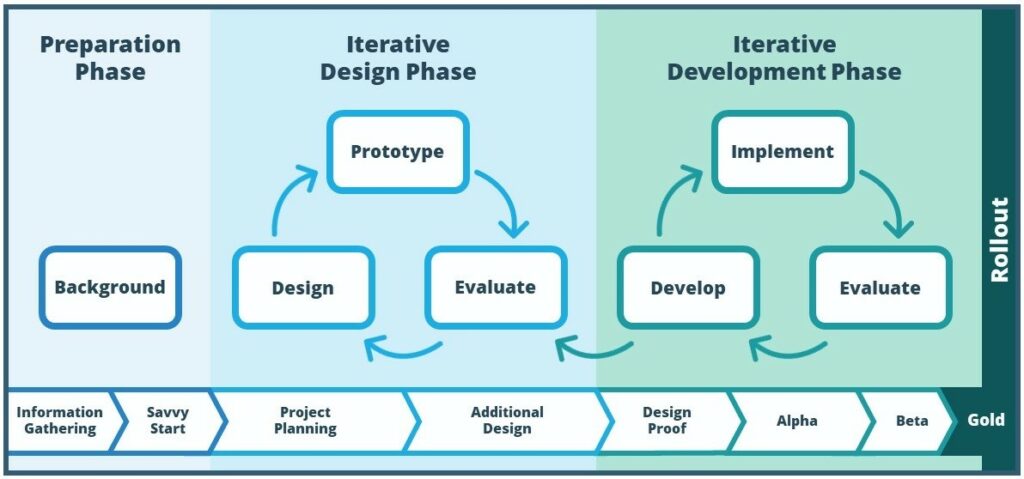Discover The QedON Design and Development Process
30 January 20245 minute read
At QedON you, the client, is integral to the design and development process. You control the process while we guide you every step of the way.
QedON works on a three-tier system for instructional design. The tier applied is dependent on the level of source material preparation required and the complexity of end-user interactions desired.
We use the Successive Approximation Model (SAM) model for learning content development which is an iterative design approach and based on ongoing communication between both parties. We use the VARK model which incorporates all learning styles and includes visual, aural, read/write, and kinaesthetic elements, while following the SCULPT framework for accessibility. Learning content can be developed as a standalone product or hosted within a course on our learning platform.
The process starts with the Preparation Phase where there will be an initial information gathering meeting to discuss your training needs and aims as well as to collect source material. Depending on where it is hosted, we would decide if graded assessments and certificates are internal or external to the learning module.
This is followed by the Iterative Design Phase. This phase begins with a brainstorming session to establish the project foundation and completion requirements. A prototype of three slides is designed in PowerPoint and reviewed, then an alpha version with one course topic based on the prototype, followed by a beta version with the full learning module. At the end of this phase all wording, imagery, narrations, and interactions will all have been confirmed.
The third phase is the Iterative Design Phase. This follows a similar pattern to the previous phase with the development of the prototype in Storyline and review. This is followed by an alpha version with the first learning topic, and then by the beta version containing the full learning module. By the end of this phase all elements including on-screen wording, narration, animations, and interactions will all have been confirmed.
The last stage of the process is the formal sign-off and Rollout. The final result can be hosted on your own learning platform, or you can have your own tenancy on our Learning Hub – more about that in the blog post “Becoming a Tenant on the QedON Learning Hub”.
If you would like to know more about eLearning development with QedON get in touch today!
Contact:
Fong Hayes
Director of EdTech Development


